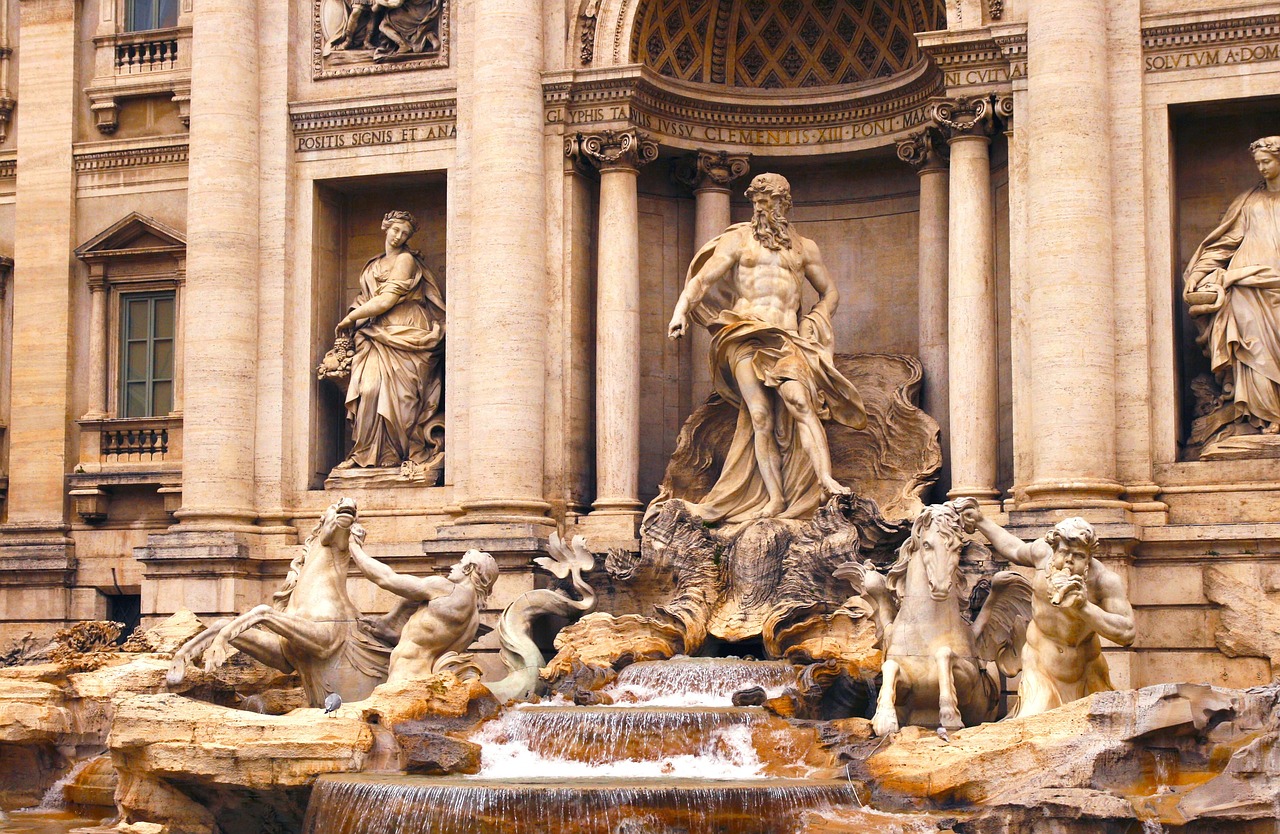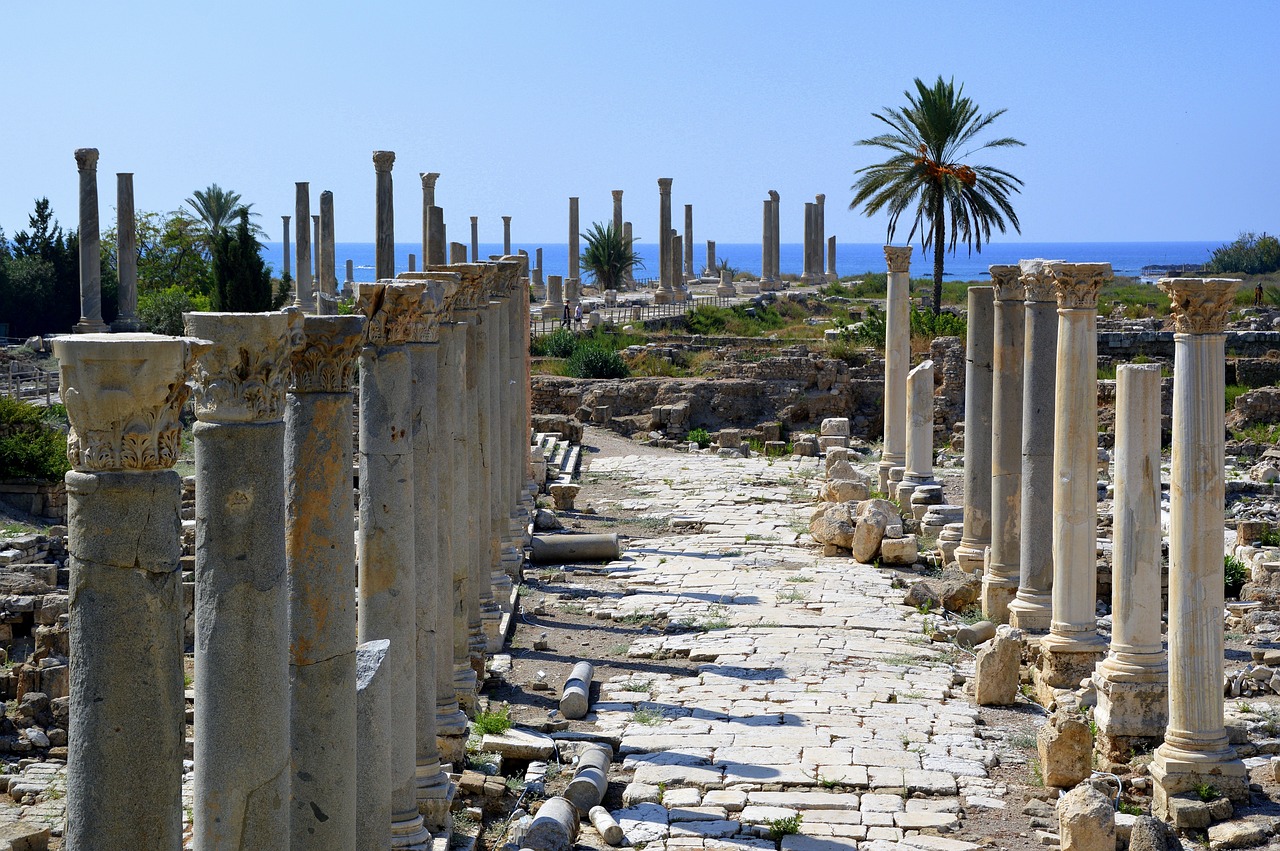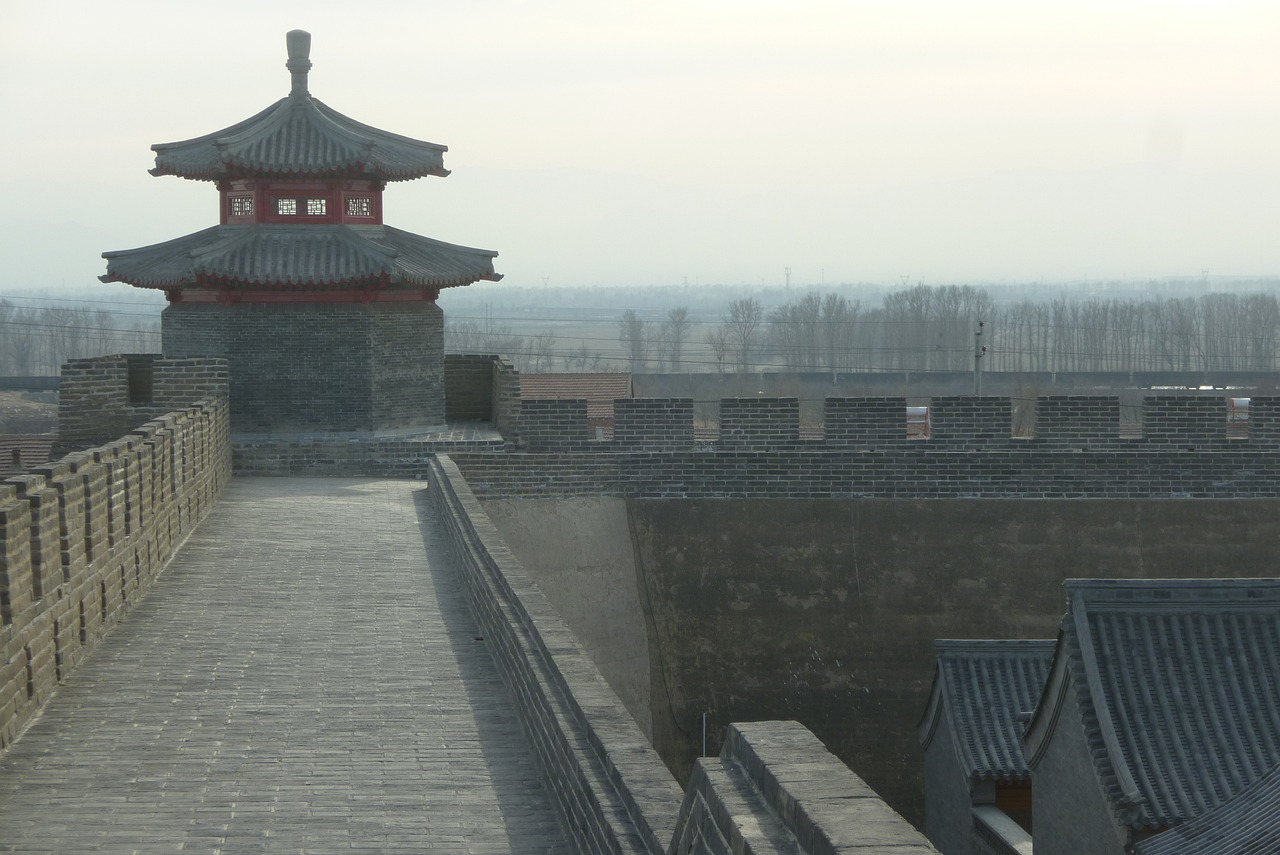The Mystery of the Ancient Phoenicians' Influence
The enigmatic influence of the ancient Phoenicians continues to intrigue historians and archaeologists alike. These seafaring people from the Mediterranean region have left a lasting legacy that transcends time, impacting various aspects of culture, trade, language, and civilization.
Originating from the coastal areas of present-day Lebanon, the Phoenician civilization flourished due to their maritime prowess and strategic location. Their influence extended across the Mediterranean, establishing trade routes that connected distant lands and fostering economic dominance in the ancient world.
Key Phoenician city-states such as Tyre, Sidon, and Carthage played pivotal roles in shaping regional politics and commerce. Their strategic locations and thriving economies made them significant players in the ancient world, influencing trade and cultural exchange.
One of the most enduring contributions of the Phoenicians is their development of an alphabet, which laid the foundation for modern writing systems. This linguistic legacy has had a profound impact on communication and literacy, shaping the way we write and record information today.
Delving into the religious beliefs, mythological stories, and cultural practices of the Phoenicians reveals a rich tapestry of traditions that defined their society. Their artistic achievements and architectural marvels, characterized by intricate craftsmanship and iconic structures, showcase their creative prowess and influence on art and design.
Despite their once-thriving civilization, the Phoenicians eventually faced decline due to various factors. However, their legacy endures through their contributions to trade, language, art, and architecture, leaving an indelible mark on human history.
Ongoing archaeological discoveries and scholarly debates continue to shed light on the mysteries surrounding the ancient Phoenicians, uncovering new insights into their civilization and expanding our understanding of their enduring influence.

Origins and Expansion of the Phoenician Civilization
Exploring the enigmatic impact of the Phoenicians in ancient times and their lasting legacy on various aspects of culture, trade, language, and civilization.
The Phoenician civilization, originating from the coastal region of the eastern Mediterranean, emerged as a maritime powerhouse renowned for their seafaring skills and trading acumen. With roots dating back to the early second millennium BCE, the Phoenicians established a network of city-states along the shores of present-day Lebanon, Syria, and Israel. Their strategic location allowed them to expand their influence across the Mediterranean, establishing colonies and trade routes that connected distant lands.

Phoenician Trade Routes and Economic Dominance
Exploring the enigmatic impact of the Phoenicians in ancient times and their lasting legacy on various aspects of culture, trade, language, and civilization.
Tracing the roots of the Phoenician civilization, their maritime prowess, and the extent of their influence across the Mediterranean region.
Examining the strategic trade routes established by the Phoenicians and their economic dominance in the ancient world.
The Phoenicians were renowned for their mastery of maritime trade, establishing extensive networks that connected the ancient world. Their strategic location along the eastern Mediterranean coast allowed them to control vital trade routes, facilitating the exchange of goods and ideas between diverse cultures. Through their skilled navigation and commercial acumen, the Phoenicians dominated the trade scene, amassing wealth and influence that extended far beyond their city-states.
Highlighting key Phoenician city-states like Tyre, Sidon, and Carthage, and their roles in shaping regional politics and commerce.
Discussing the Phoenician alphabet's development, its influence on modern writing systems, and the linguistic legacy of the Phoenicians.
Exploring the religious beliefs, mythological stories, and cultural practices of the Phoenicians that shaped their society and interactions with other civilizations.
Showcasing the artistic talents and architectural innovations of the Phoenicians, including their intricate craftsmanship and iconic structures.
Investigating the factors that led to the decline of the Phoenician civilization and the enduring legacy they left behind in various fields of human endeavor.
Highlighting recent archaeological findings, scholarly debates, and ongoing research efforts that continue to unravel the mysteries of the ancient Phoenicians.

Major Phoenician City-States and Their Significance
The Phoenician civilization was characterized by the presence of major city-states that played pivotal roles in shaping the ancient world. Among these, Tyre, Sidon, and Carthage stood out as prominent centers of power and influence. Tyre, known for its strategic location and maritime trade, was a hub of economic activity and cultural exchange. Sidon, with its flourishing trade networks and skilled artisans, contributed significantly to the region's prosperity. Carthage, founded by Phoenician settlers, emerged as a formidable naval power and a key player in Mediterranean politics.
These city-states served as crucial nodes in the vast network of Phoenician trade routes, connecting the eastern Mediterranean to distant lands and facilitating the exchange of goods, ideas, and technologies. Their strategic locations along the coast allowed them to control maritime trade and establish economic dominance in the region. The wealth accumulated through trade enabled these city-states to invest in infrastructure, arts, and military capabilities, further solidifying their significance.
Moreover, the major Phoenician city-states were not merely centers of commerce but also hubs of cultural exchange and innovation. They fostered the development of the Phoenician alphabet, a groundbreaking writing system that influenced the scripts of various civilizations and laid the foundation for modern alphabets. The cultural and linguistic contributions of these city-states transcended borders, shaping the intellectual landscape of the ancient world.
Overall, the major Phoenician city-states of Tyre, Sidon, and Carthage played a crucial role in the flourishing of the Phoenician civilization, leaving a lasting impact on trade, culture, and language that reverberated across the centuries.

Phoenician Alphabet and Linguistic Contributions
The Phoenician alphabet holds a significant place in the history of writing systems, serving as a pivotal development that influenced many languages and scripts around the world. Dating back to the second millennium BCE, the Phoenician script consisted of 22 consonantal letters, lacking vowels, which were later adopted and adapted by various cultures.
One of the most remarkable contributions of the Phoenician alphabet was its simplicity and efficiency. Unlike the intricate hieroglyphic systems of ancient Egypt, the Phoenician script was phonetic, representing sounds rather than ideas or objects. This innovation made writing more accessible and paved the way for the evolution of alphabets in different civilizations.
The spread of the Phoenician alphabet through trade and cultural exchanges played a crucial role in its dissemination across the Mediterranean and beyond. As merchants and seafarers, the Phoenicians carried their written language to distant lands, leaving a linguistic legacy that transcended borders and connected diverse populations.
Moreover, the Phoenician alphabet served as the basis for several prominent writing systems, including the Greek, Latin, and Hebrew scripts. Through a process of adaptation and refinement, each culture tailored the Phoenician characters to suit their language, giving rise to new alphabets that shaped the course of literature, communication, and knowledge dissemination.
In essence, the Phoenician alphabet revolutionized the way humans recorded information and communicated ideas, laying the groundwork for the rich tapestry of written languages we encounter today. Its enduring influence underscores the enduring legacy of the Phoenicians in the realm of linguistics and cultural exchange.

Phoenician Religion, Mythology, and Cultural Practices
Exploring the rich tapestry of Phoenician culture unveils a world steeped in intricate religious beliefs, captivating mythological narratives, and unique cultural practices. The Phoenicians held a deep reverence for their deities, with each city-state often worshipping specific gods and goddesses associated with various aspects of life and nature. Their mythology was a vibrant tapestry of tales that explained the mysteries of the world, from the creation of the universe to the daily struggles of humanity.
Central to Phoenician religious practices were elaborate rituals and ceremonies conducted to appease the divine forces and seek their favor. Sacrifices, libations, and offerings were common ways through which the Phoenicians expressed their devotion and sought protection from malevolent spirits. The priests and priestesses played a crucial role in mediating between the mortal realm and the divine, ensuring the harmony of the cosmos.
Moreover, the Phoenicians' cultural practices were deeply intertwined with their religious beliefs, influencing everything from art and architecture to daily routines and social interactions. Their skilled craftsmanship and artistic sensibilities were evident in the intricate designs adorning their temples, palaces, and everyday objects. The Phoenicians' legacy in the realm of art and culture continues to mesmerize historians and archaeologists, offering a glimpse into a civilization that valued beauty and creativity.
Furthermore, the Phoenicians' cultural exchanges with neighboring civilizations enriched their own practices, leading to a fusion of traditions and beliefs that shaped their identity. The influence of Egyptian, Mesopotamian, and Greek cultures can be seen in various aspects of Phoenician religion and mythology, highlighting their role as cultural intermediaries in the ancient world.

Artistic Achievements and Architectural Marvels of the Phoenicians
The Phoenicians were not only skilled traders and seafarers but also renowned for their artistic achievements and architectural marvels that continue to captivate historians and archaeologists to this day. One of the most striking aspects of Phoenician artistry was their intricate craftsmanship in producing exquisite jewelry, pottery, and ivory carvings. Their attention to detail and mastery of techniques set them apart in the ancient world, showcasing their creativity and aesthetic sensibilities.
Furthermore, the Phoenicians were pioneers in architectural innovation, constructing impressive structures that stood as testaments to their engineering prowess. Among their architectural marvels, the most famous is the Temple of Melqart in Tyre, a monumental structure dedicated to the Phoenician god of Tyre. The temple's grandeur and intricate design reflected the religious devotion and architectural sophistication of the Phoenician civilization.
Moreover, Phoenician cities like Sidon and Byblos boasted impressive city planning and monumental buildings, such as fortifications, palaces, and public spaces. The Phoenicians' architectural achievements not only served functional purposes but also symbolized their cultural identity and artistic excellence, leaving a lasting legacy for future generations to admire and study.
In addition to their artistic and architectural endeavors, the Phoenicians were also known for their innovative use of materials and incorporation of intricate patterns and motifs in their designs. Their expertise in metallurgy, glassmaking, and textile production allowed them to create unique and visually stunning artifacts that showcased their technical skills and artistic vision.
Overall, the artistic achievements and architectural marvels of the Phoenicians stand as a testament to their creativity, craftsmanship, and cultural sophistication. Through their masterful works of art and impressive structures, the Phoenicians have left an indelible mark on the history of art and architecture, inspiring admiration and awe for millennia.

Decline of the Phoenician Civilization and Legacy
As the centuries passed, the once mighty Phoenician civilization began to face challenges that ultimately led to its decline. The rise of competing powers in the region, such as the Assyrians and Babylonians, posed significant threats to Phoenician autonomy and prosperity. Additionally, internal strife and power struggles within Phoenician city-states weakened their unity and ability to resist external pressures.
One of the major turning points in Phoenician history was the series of conquests by the Persian Empire in the 6th century BCE. The Persians, under the rule of Cyrus the Great, conquered Phoenician territories and integrated them into their vast empire. This marked the beginning of the end for Phoenician independence and influence in the region.
Furthermore, the emergence of new maritime powers, such as the Greeks and Romans, further marginalized the Phoenicians in trade and commerce. The strategic importance of Phoenician ports and trade routes diminished as other civilizations expanded their own maritime capabilities and networks.
Despite their decline as a dominant political and economic force, the Phoenicians left a lasting legacy that continues to resonate in various fields. Their contributions to navigation, shipbuilding, and seafaring techniques influenced future generations of sailors and explorers. The spread of the Phoenician alphabet laid the foundation for numerous writing systems, including the Greek and Latin scripts.
Archaeological excavations of Phoenician sites have unearthed valuable artifacts and insights into their culture and technological advancements. The legacy of the Phoenicians lives on in the memories of their achievements and the enduring impact they had on the development of ancient civilizations.

Modern Discoveries and Ongoing Research on the Phoenicians
In the realm of archaeology and historical research, the Phoenicians continue to captivate scholars and enthusiasts alike with their mysterious legacy. Recent excavations have unearthed new insights into the daily lives, trade practices, and cultural nuances of this ancient seafaring civilization. These discoveries shed light on the intricate network of Phoenician trade routes, revealing the extent of their economic reach and influence in the ancient world. Scholars are also delving deeper into the religious beliefs and mythological narratives of the Phoenicians, unraveling the rich tapestry of their spiritual practices and cultural traditions.
Ongoing research efforts are focused on deciphering the Phoenician alphabet and its evolution into modern writing systems. Linguists are meticulously studying ancient inscriptions and texts to piece together the linguistic puzzle left behind by the Phoenicians. The exploration of Phoenician artistic achievements and architectural wonders continues to inspire awe and admiration, showcasing the craftsmanship and ingenuity of this ancient civilization. As researchers delve further into the depths of Phoenician history, new revelations and surprises await, promising a deeper understanding of their enduring impact on human civilization.

